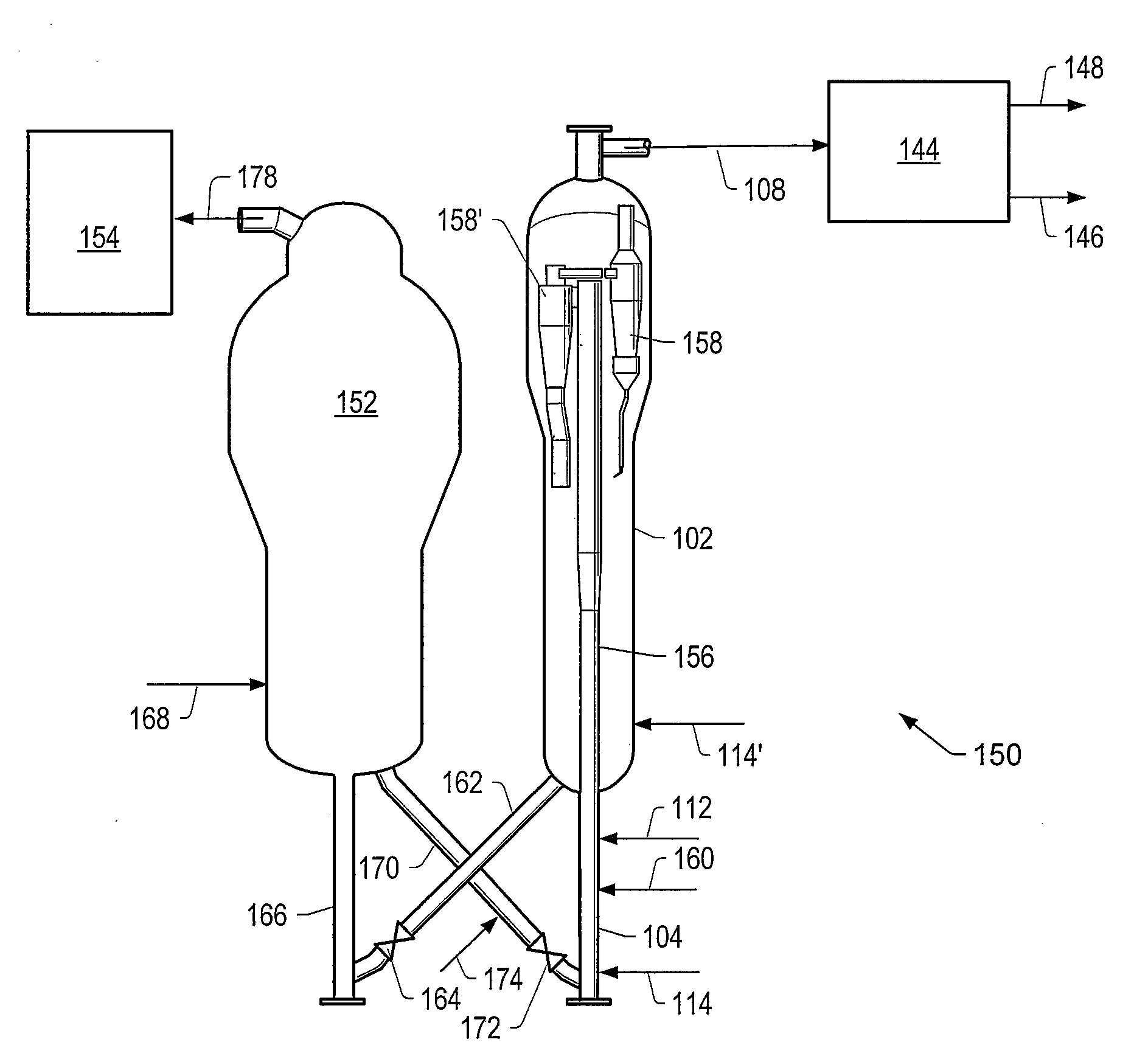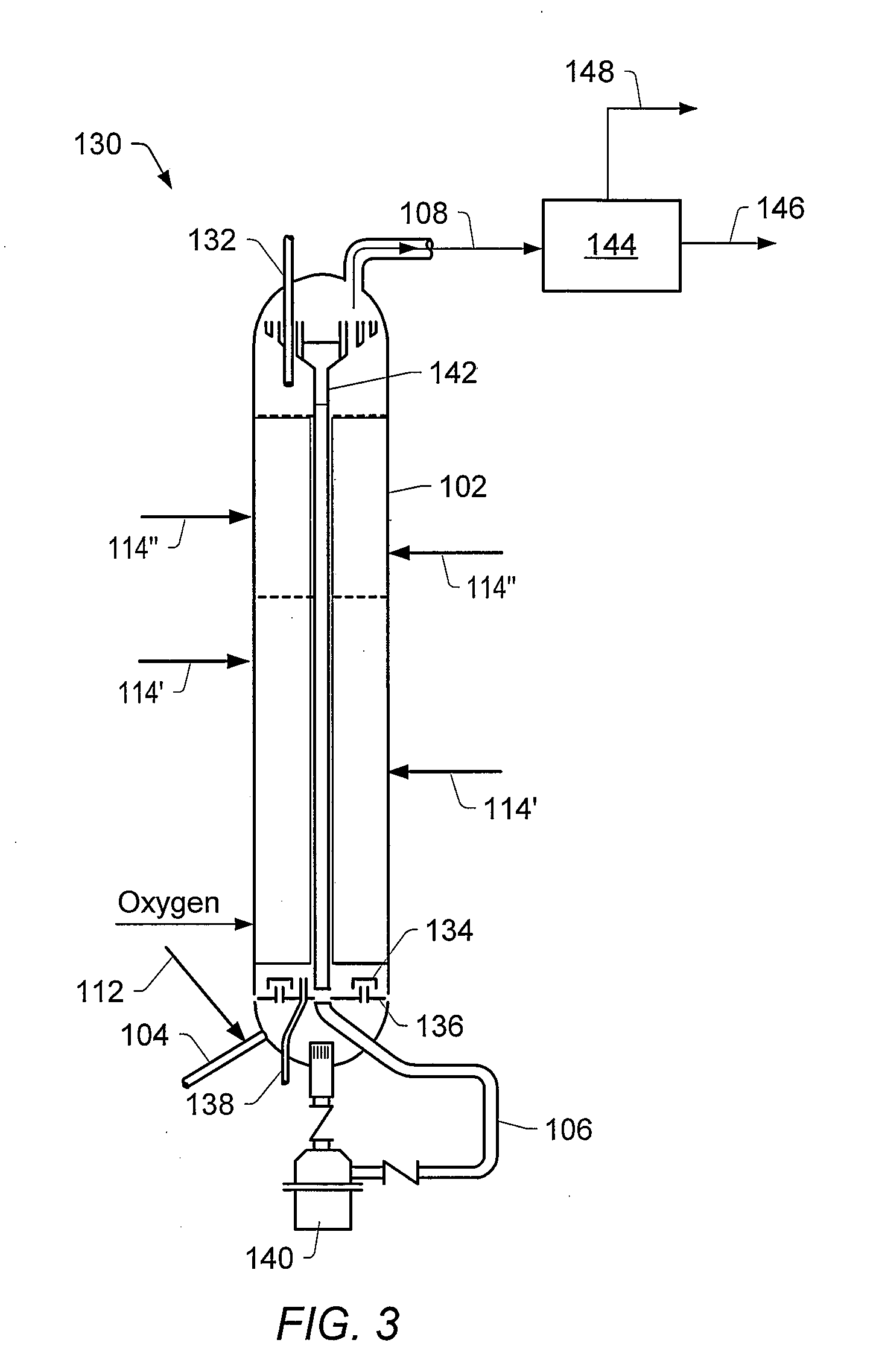Methods for producing a total product at selected temperatures
a technology of total product and temperature, applied in the direction of hydrocarbon oil cracking, liquid carbonaceous fuels, fuels, etc., can solve the problems of difficult and expensive transportation and/or processing of crude using conventional facilities, difficult water removal of less viscous crude and/or crude mixtures using conventional means, and disadvantaged crudes often contain relatively high residue levels
- Summary
- Abstract
- Description
- Claims
- Application Information
AI Technical Summary
Benefits of technology
Problems solved by technology
Method used
Image
Examples
example 1
[0254]TAP Testing of a K2CO3 / Rb2CO3 / Cs2CO3 Catalyst and the Individual Inorganic Salts. In all TAP testing, a 300 mg sample was heated in a reactor of a TAP system from room temperature (about 27° C.) to 500° C. at a rate of about 50° C. per minute. Emitted water vapor and carbon dioxide gas were monitored using a mass spectrometer of the TAP system.
[0255]The K2CO3 / Rb2CO3 / Cs2CO3 catalyst supported on alumina showed a current inflection of greater than 0.2 volts for emitted carbon dioxide and a current inflection of 0.01 volts for emitted water from the inorganic salt catalyst at about 360° C. The minimum TAP temperature was about 360° C., as determined by plotting the log 10 of the ion current versus temperature. FIG. 10 is a graphical representation of log 10 plots of ion current of emitted gases from the K2CO3 / Rb2CO3 / Cs2CO3 catalyst (“log(I)”) versus temperature (“T”). Curves 232 and 234 are log 10 values for the ion currents for emitted water and CO2 from the inorganic salt catal...
example 2
[0258]DSC Testing of an Inorganic Salt Catalyst and Individual Inorganic Salts. In all DSC testing, a 10 mg sample was heated to 520° C. at a rate of 10° C. per min, cooled from 520° C. to 0.0° C. at rate of 10° C. per minute, and then heated from 0° C. to 600° C. at a rate of 10.0° C. per min using a differential scanning calorimeter (DSC) Model DSC-7, manufactured by Perkin-Elmer (Norwalk, Conn., U.S.A.).
[0259]DSC analysis of a K2CO3 / Rb2CO3 / Cs2CO3 catalyst during second heating of the sample shows that the salt mixture exhibited a broad heat transition between 219° C. and 260° C. The midpoint of the temperature range was about 250° C. The area under heat transition curve was calculated to be −1.75 Joules per gram. The beginning of crystal disorder was determined to start at the minimum DSC temperature of 219° C.
[0260]In contrast to these results, no definite heat transitions were observed for cesium carbonate.
[0261]DSC analysis of a mixture of Li2CO3, Na2CO3, and K2CO3 during the ...
example 3
[0262]Ionic Conductivity Testing of an Inorganic Salt Catalysts or an Individual Inorganic Salt Relative to K2CO3. All testing was conducted by placing 3.81 cm (1.5 inches) of the inorganic salt catalysts or the individual inorganic salts in a quartz vessel with platinum or copper wires separated from each other, but immersed in the sample in a muffle furnace. The wires were connected to a 9.55 volt dry cell and a 220,000 ohm current limiting resistor. The muffle furnace was heated to 600° C. and the current was measured using a microammeter.
[0263]FIG. 11 is a graphical representation of log plots of the sample resistance relative to potassium carbonate resistance (“log(rK2CO3)”) versus temperature (“T”). Curves 240, 242, 244, 246, and 248 are log plots of K2CO3 resistance, CaO resistance, K2CO3 / Rb2CO3 / Cs2CO3 catalyst resistance, Li2CO3 / K2CO3 / Rb2CO3 / Cs2CO3 catalyst resistance, and Na2CO3 / K2CO3 / Rb2CO3 / Cs2CO3 catalyst resistance, respectively.
[0264]CaO (curve 242) exhibits relatively ...
PUM
| Property | Measurement | Unit |
|---|---|---|
| operating pressure | aaaaa | aaaaa |
| temperature | aaaaa | aaaaa |
| contacting temperature | aaaaa | aaaaa |
Abstract
Description
Claims
Application Information
 Login to View More
Login to View More - R&D
- Intellectual Property
- Life Sciences
- Materials
- Tech Scout
- Unparalleled Data Quality
- Higher Quality Content
- 60% Fewer Hallucinations
Browse by: Latest US Patents, China's latest patents, Technical Efficacy Thesaurus, Application Domain, Technology Topic, Popular Technical Reports.
© 2025 PatSnap. All rights reserved.Legal|Privacy policy|Modern Slavery Act Transparency Statement|Sitemap|About US| Contact US: help@patsnap.com



